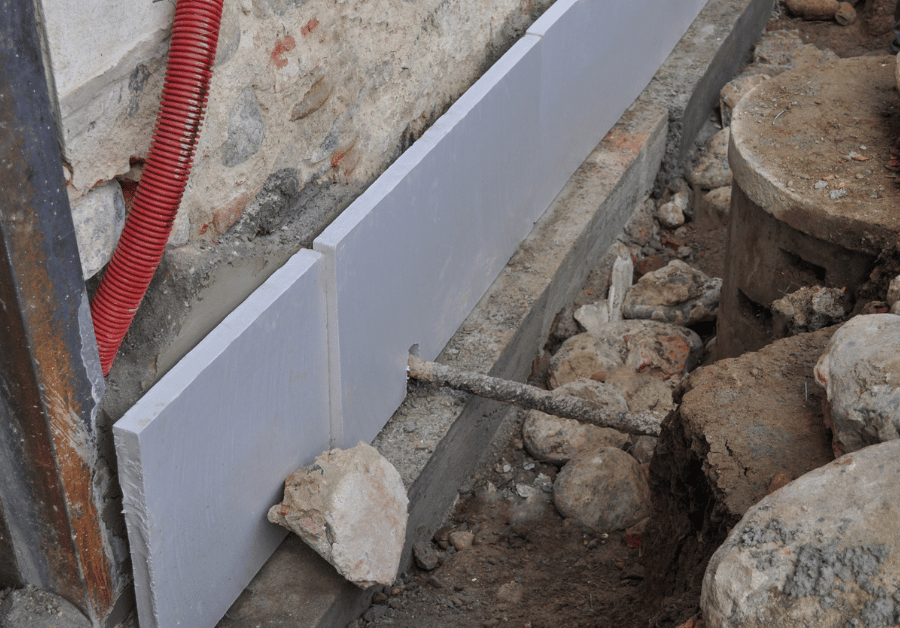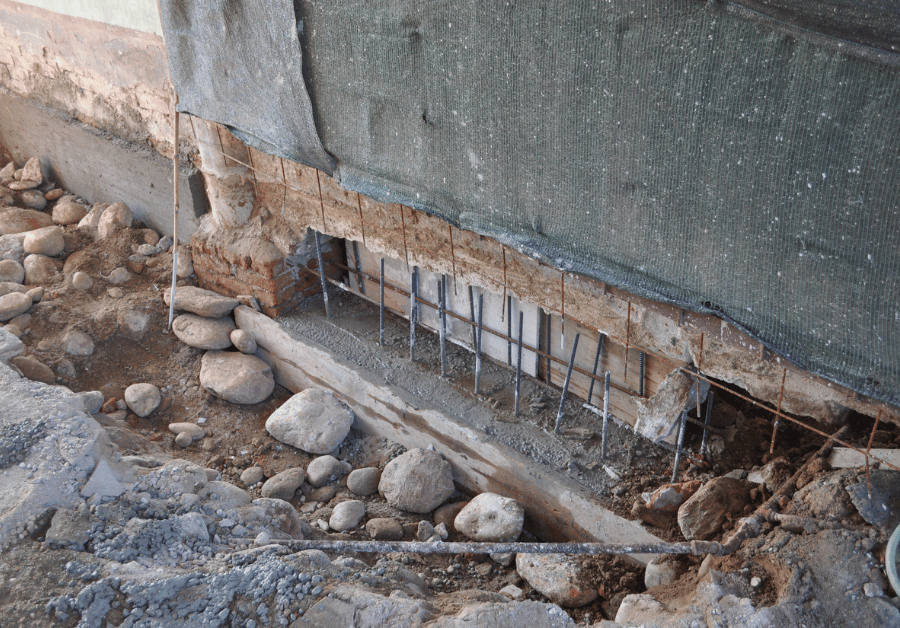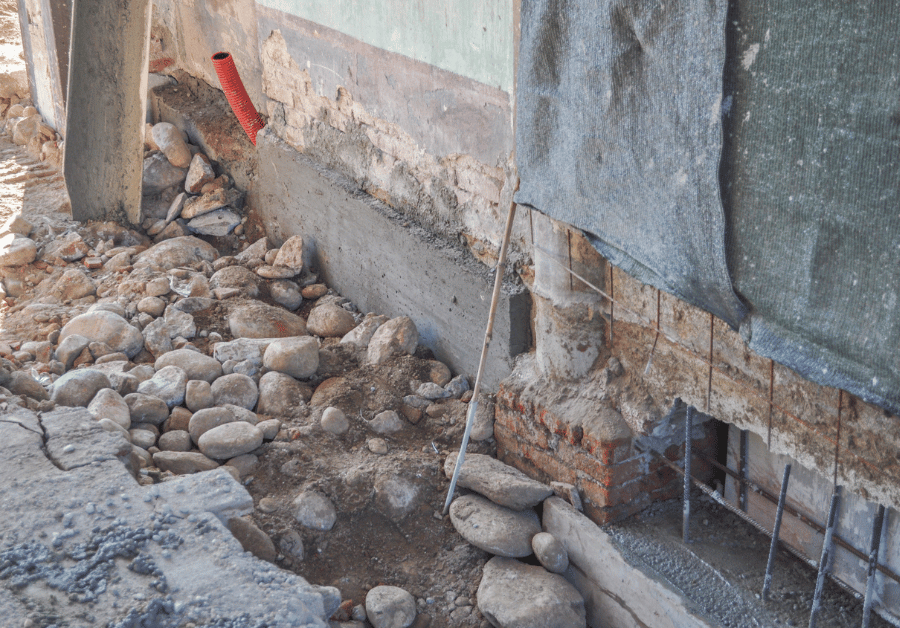House Underpinning Near Me: Restoring Stability to Your Australian Home
Are you noticing unsettling cracks in your walls, uneven floors that feel like a funhouse, or doors and windows that suddenly refuse to close properly? These aren't just minor annoyances; they're often tell-tale signs that your home's foundation might be in distress. For countless Australian homeowners, from the bustling streets of Sydney and Melbourne to the sunny coasts of Perth, the vibrant communities of Brisbane and Adelaide, and the charming landscapes of Hobart, these issues can lead to significant stress and a depreciating property value. When your home's very foundation begins to shift, it's time to consider a critical solution: house underpinning near me.
This comprehensive guide is designed to demystify house underpinning, providing you with the knowledge you need to understand why it happens, what to look for, and how to find reliable underpinning experts to restore your home's structural integrity. We’ll explore the various methods, cost considerations, and how to choose the right professionals for your specific needs, ensuring your biggest asset remains safe and sound.
What is House Underpinning and Why is it Essential for Australian Homes?

At its core, underpinning is the process of strengthening and stabilising the foundation of an existing building or structure. It involves extending the foundation deeper or wider so that it rests on a more stable soil stratum or to distribute the load over a greater area. Think of it as giving your home a stronger, more stable pair of ‘feet’ to stand on.
In Australia, particularly in regions with reactive clay soils (common in areas like Melbourne, Sydney, and Adelaide) or those prone to drought and heavy rainfall cycles, soil movement is a frequent culprit behind foundation problems. When the soil beneath your home expands and contracts due to moisture changes, or erodes away, it can cause the existing foundations to settle unevenly, leading to a host of structural issues. This phenomenon is known as subsidence. Prompt subsidence repair through professional house underpinning is not just a repair; it’s an investment in your home’s longevity and safety.
Common Causes of Foundation Movement in Australia:
- Reactive Clay Soils: These soils swell when wet and shrink when dry, leading to constant movement.
- Poor Drainage: Water pooling near foundations can saturate soil or cause erosion, washing away supporting ground.
- Tree Roots: Large trees too close to a property can extract significant moisture from the soil, causing it to shrink.
- Plumbing Leaks: Persistent leaks can saturate the soil, weakening its load-bearing capacity.
- Soil Erosion: Especially on sloping blocks or properties near waterways, erosion can undermine foundations.
- Poor Construction/Original Footing Design: Sometimes, the initial foundations weren’t adequate for the soil conditions.
- Earthquakes or Tremors: While less common than other factors, seismic activity can also affect foundations.
Recognising the Red Flags: Signs You Need House Underpinning
Identifying the early signs of foundation problems is crucial. The sooner you act, the less extensive and costly the underpinning work may be. Keep an eye out for these common indicators:
Visible Wall Cracks:
- Internal Wall Cracks: Look for cracks appearing in plasterboard, especially around door and window frames, or where walls meet ceilings. Diagonal cracks are often a strong indicator.
- External Wall Cracks: Cracks in brickwork or render, particularly step cracks following mortar lines, or larger horizontal/vertical fissures.
- Cracks in Concrete Slabs: Noticeable cracks in concrete floors, patios, or driveways immediately adjacent to the house.
Uneven or Sinking Floors:
- A noticeable slope or sag in floors, particularly in older homes.
- Feeling a ‘bounce’ or instability when walking across certain areas.
- Sinking floors are a clear sign that the support beneath is failing.
Sticking Doors and Windows:
- Doors and windows that previously operated smoothly now jam, stick, or don't close properly, indicating frame distortion.
- Gaps appearing around door and window frames.
Gaps and Separation:
- Gaps forming between walls and ceilings or walls and floors.
- Separation of skirting boards from the floor or wall.
Bowing or Leaning Walls:
- Walls that appear to be bulging inwards or outwards, or are visibly out of plumb.
Rising Damp and Moisture Issues:
- While not always directly caused by foundation issues, structural movement can exacerbate rising damp problems by creating pathways for moisture.
If you observe any of these signs, it’s vital to get a professional assessment. Delaying action can lead to more severe damage and significantly higher repair costs for your house underpinning near me.
The Science Behind Stability: Common Underpinning Methods in Australia
There isn't a one-size-fits-all solution for foundation repair. The best method for your home will depend on the specific soil conditions, the extent of the damage, and the type of structure. Here’s a look at common underpinning services available in Australia:
Comparison of Underpinning Methods
| Method | Description | Pros | Cons | Typical Cost Range (Per Metre) |
|---|---|---|---|---|
| Traditional Underpinning (Mass Concrete) | Excavating in sections beneath the existing footing and pouring new concrete to create a deeper, wider foundation. This is a robust method for significant settlement. | Proven, highly effective for heavy loads, permanent solution. | Invasive, disruptive, labour-intensive, requires significant excavation. | $1,000 – $3,000+ (as seen in Perth, can vary by location and complexity) |
| Resin Injection Underpinning (Chemical Underpinning) | Injecting expanding geo-polymeric resin into the soil beneath the foundations. The resin expands and compacts the soil, lifting and stabilising the structure. This is a common solution for ground improvement and void filling. | Non-invasive, quick, minimal disruption, cost-effective for certain issues, can achieve precise slab lifting and level correction. | Not suitable for all soil types or very heavy structures; requires specialist equipment and expertise. | Varies widely based on volume of resin required, generally competitive for targeted repairs. |
| Screw Piles/Piers | Steel screw piles are hydraulically twisted into the ground to a stable depth, then connected to the existing foundation. Excellent for soft or unstable soils. | Fast installation, minimal vibration, immediate load-bearing, effective in varying soil conditions. | Requires access for machinery, can be more expensive for extensive work. | $1,500 – $4,000+ per pile (depending on depth and load) |
| Piled Underpinning (Mini Piles) | Smaller diameter piles are drilled into the ground adjacent to the existing foundation and connected via a concrete beam. Used when soil conditions require deep foundation support. | Very strong, suitable for heavy loads and challenging soil, precise. | More invasive than resin injection, can be more expensive, requires specialist drilling equipment. | $2,000 – $5,000+ per pile/beam section |
Each of these methods offers a unique solution to different types of foundation problems. For example, resin injection is often preferred for its minimal invasiveness and speed, making it a popular choice for residential projects where disruption needs to be kept to a minimum. Traditional underpinning remains a go-to for significant structural issues requiring substantial new concrete support. Your chosen underpinning contractors will assess your specific situation to recommend the most appropriate and effective solution.
The Underpinning Process: What to Expect When You Need House Underpinning Near Me

Undertaking foundation underpinning can seem daunting, but understanding the typical process can ease your concerns. Here’s a general overview of what you can expect when engaging professionals for underpinning work:
-
Initial Assessment & Consultation:
The first step is always a thorough inspection by experienced underpinning specialists. They will assess the visible damage, discuss your observations, and identify potential causes. This often includes an initial free quote assessment.
-
Structural Engineer's Report:
For most significant underpinning projects, a qualified structural engineer will be engaged. They will conduct detailed investigations, including soil testing, to determine the exact nature and extent of the problem. Their report will recommend the most suitable underpinning method and provide detailed specifications, ensuring the proposed solution will restore your home's structural integrity.
-
Method Selection & Planning:
Based on the engineer's report, the underpinning company will propose a tailored solution, explaining the chosen method (e.g., chemical underpinning, traditional, or screw piles) and the projected timeline. This is your opportunity to ask questions and understand the scope of the foundation repair.
-
Permits & Approvals:
Depending on your local council (whether in Sydney, Melbourne, Perth, Brisbane, Adelaide, or Hobart), building permits may be required for major structural work. Your chosen contractor should assist with this process.
-
Site Preparation:
Before work begins, the site will be prepared. This may involve clearing access routes, protecting landscaping, and setting up safety measures. For invasive methods, temporary propping might be required to support the structure.
-
Execution of Underpinning Work:
The chosen underpinning method is then implemented. This could involve careful excavation and concrete pouring for traditional methods, precise injections for resin injection, or machinery for screw piles. The team will work diligently to minimise disruption while ensuring the highest quality of work.
-
Monitoring & Post-Work Repairs:
Throughout the process, and sometimes for a period afterward, the stability of the structure may be monitored. Once the underpinning is complete, any cosmetic damage like wall cracks, uneven flooring, or compromised finishes will be repaired, bringing your home back to its best.
Cost of House Underpinning in Australia: A Transparent Look

The cost of house underpinning near me is a significant concern for many homeowners, and it's important to understand that there's no fixed price. Several factors influence the overall expense:
- Method Chosen: As highlighted in our table, different methods have varying labour and material costs. Resin injection can sometimes be more cost-effective for targeted soil stabilisation, while extensive traditional concrete underpinning might be at the higher end.
- Extent of Damage: Minor settlement affecting a small section will be less costly than widespread foundation failure requiring work across multiple walls or an entire property.
- Soil Conditions: Complex or highly reactive soils may require more advanced techniques or deeper foundations, increasing costs.
- Accessibility: Difficult access to the affected areas can increase labour time and equipment requirements.
- Location: Costs can vary between states and major cities. For example, labour rates and material costs in Sydney or Melbourne might differ from those in Perth, Brisbane, Adelaide, or Hobart.
- Engineer's Fees: The cost of a structural engineer's report and supervision is an essential part of the overall project budget.
- Ancillary Repairs: The cost of repairing internal and external cosmetic damage after the underpinning is complete should also be factored in.
While snippets from Perth suggest mass concrete underpinning can range from $1,000 – $3,000 per meter, and beam and base underpinning from $1,500 – $3,500 per meter, these are indicative figures. For more precise estimates, it's crucial to get a detailed assessment for your specific property. Many reputable companies offer a free quote to get you started.
Consider underpinning an investment in your home's long-term stability and value. Addressing foundation issues promptly can prevent more catastrophic and expensive problems down the track.
Choosing the Right Underpinning Specialists Near You
When your home's foundation is at stake, selecting the right professionals is paramount. Don't just search for "house underpinning near me" and pick the first option. Here’s what to look for in reliable underpinning contractors and underpinning specialists:
- Experience and Expertise: Look for companies with a proven track record in residential projects and specific experience with the type of foundation issues common in your area (e.g., reactive clays in Melbourne, sandy soils in Perth). Ask about their years in the business and specific project examples.
- Licensing and Insurance: Ensure they are fully licensed and insured. This protects you in case of accidents or unforeseen issues during the underpinning work.
- Structural Engineer Collaboration: A professional company will always advocate for, or directly engage, a qualified structural engineer to diagnose the problem and design the solution. This ensures the correct approach is taken.
- Transparent Quoting: Expect a detailed, itemised free quote that clearly outlines the scope of work, materials, timeline, and costs. Be wary of vague estimates or pressure tactics.
- Client Reviews and Testimonials: Check online platforms for Google reviews and testimonials. Positive feedback about their professionalism, communication, and quality of work is a good sign. Look for mentions of successful subsidence repair and foundation repair.
- Warranty: A reputable company will offer a warranty on their underpinning services, giving you peace of mind about the longevity of their work.
- Communication: Choose a team that communicates clearly and keeps you informed throughout the process, from the initial assessment to project completion.
Regional Considerations: Underpinning Across Australia
While the principles of underpinning remain consistent, local geological conditions and building practices mean that the specifics can vary significantly across Australia’s major cities:
- Sydney: Often deals with reactive clay soils (like the famous Wianamatta Shale) and older homes with shallow foundations. House underpinning in Sydney frequently involves addressing issues related to soil expansion and contraction, as well as tree root damage.
- Melbourne: Similar to Sydney, Melbourne’s geology includes vast areas of reactive clay, making subsidence and sinking floors a common problem. Underpinning solutions here often focus on stabilising these challenging soil types.
- Perth: Characterised by sandy soils, which can be prone to settlement if not properly compacted or if water tables fluctuate. Underpinning Perth homes might involve different methods suited for sandy, less cohesive ground, such as screw piles or resin injection for ground improvement.
- Brisbane: The subtropical climate with heavy rainfall periods can lead to saturated soils and erosion, impacting foundations. Clay soils are also prevalent. Underpinning Brisbane properties often addresses water-related soil instability.
- Adelaide: Known for its expansive clay soils, particularly in the foothills and plains. These soils are highly reactive to moisture changes, making foundation underpinning a frequent requirement for Adelaide homeowners.
- Hobart: With varied geology, including dolerite and sedimentary rocks, foundations in Hobart can be affected by ground movement due to moisture, erosion on slopes, or older construction methods. Local underpinning experts will have specific experience with Hobart’s unique challenges.
Regardless of your location, understanding these regional nuances helps in selecting the right local underpinning services.
Ready to Restore Your Home's Foundation?
Dealing with foundation problems can be stressful, but with the right information and professional help, your home can regain its stability and value. Whether you’re facing wall cracks in Brisbane, sinking floors in Melbourne, or need comprehensive foundation repair in Perth, Adelaide, Sydney, or Hobart, finding reliable underpinning services is the first step.
Don't let structural issues compromise your home's future. Take action today and connect with trusted local professionals who specialise in house underpinning near me. Get 3 Quote makes it simple to find experienced underpinning experts who can provide the solutions you need.
Ready to get started? Tell us what you need, receive up to 3 detailed free quotes from verified local professionals, and choose the best match for your house underpinning project!
